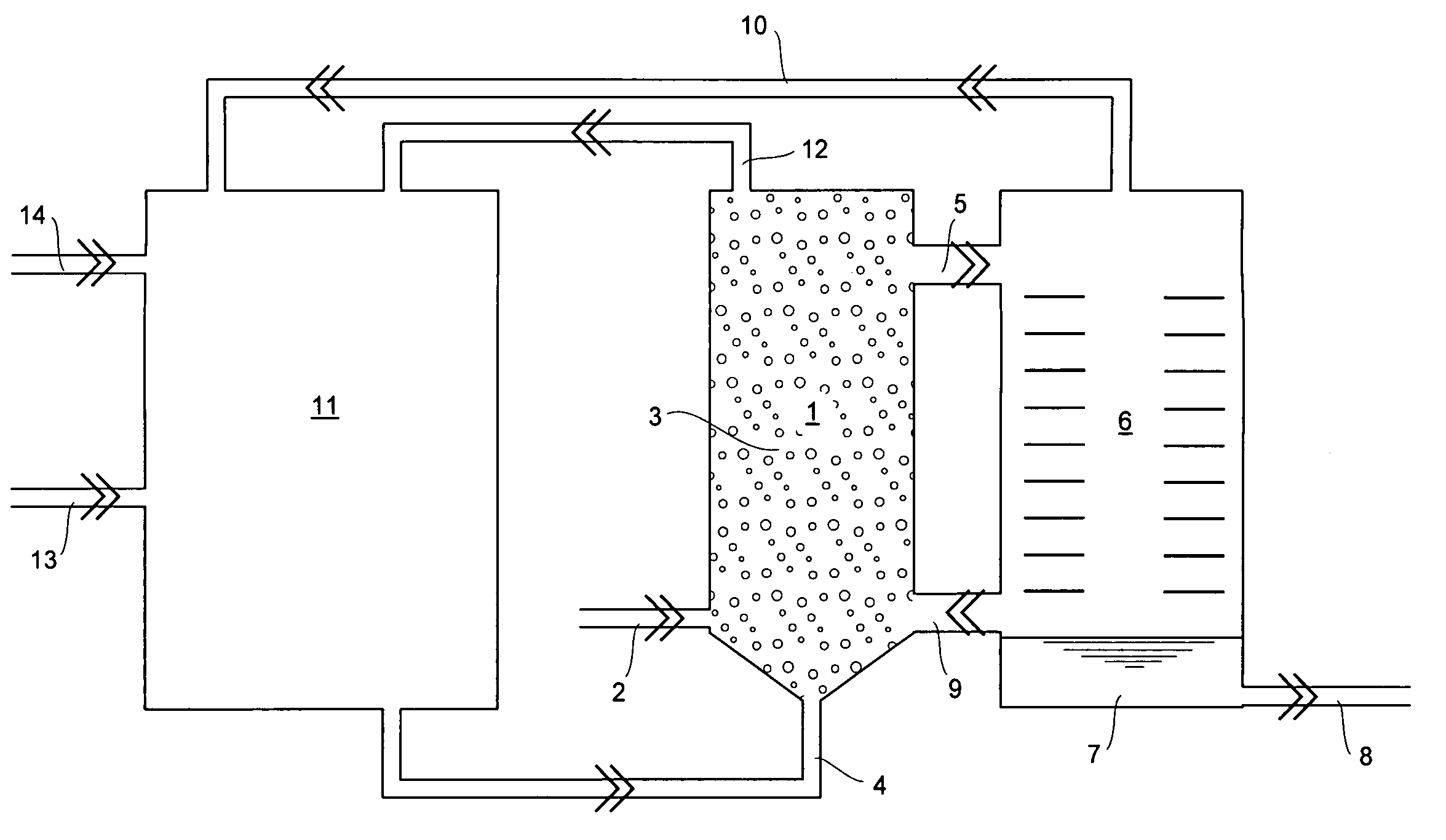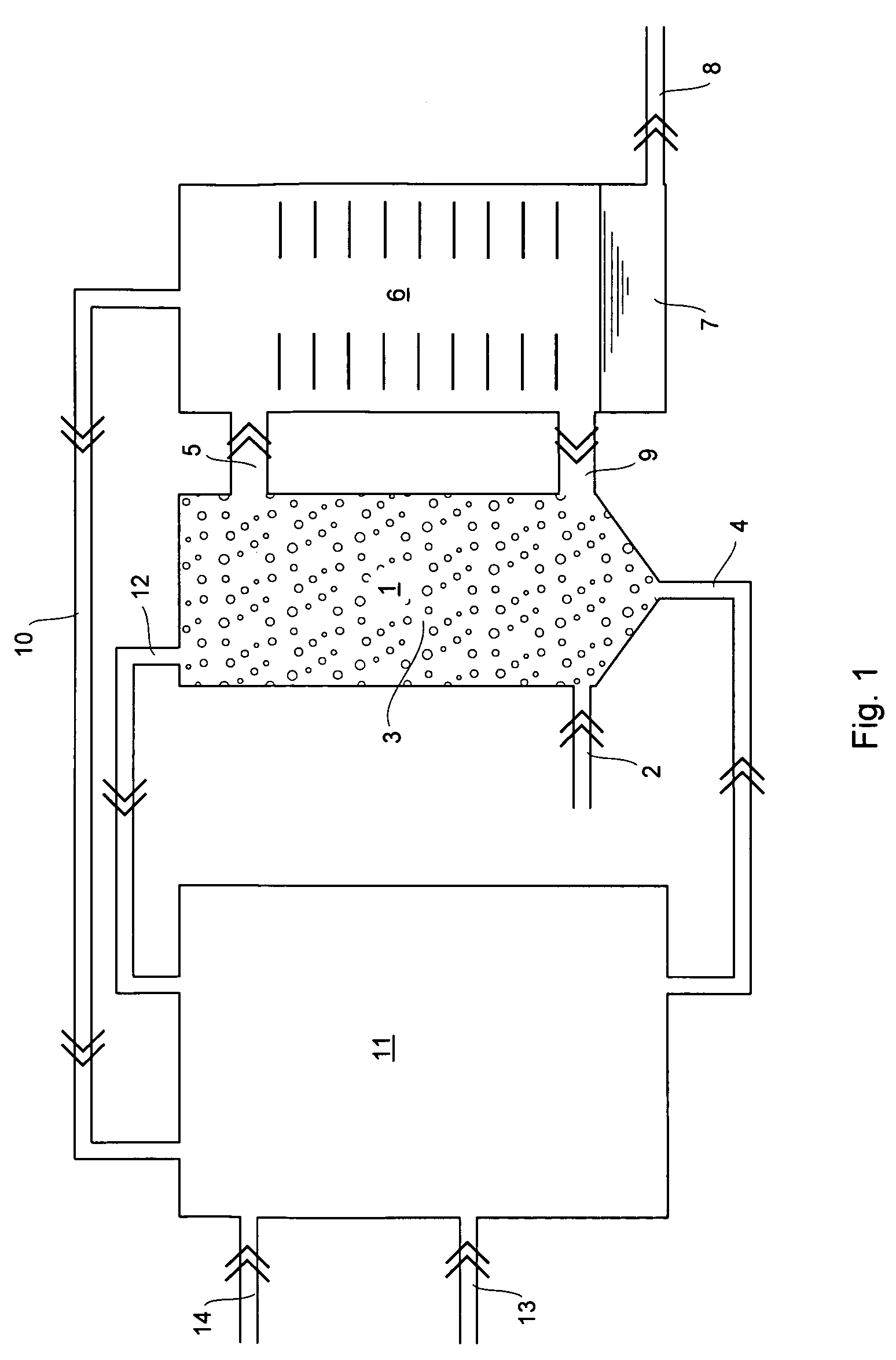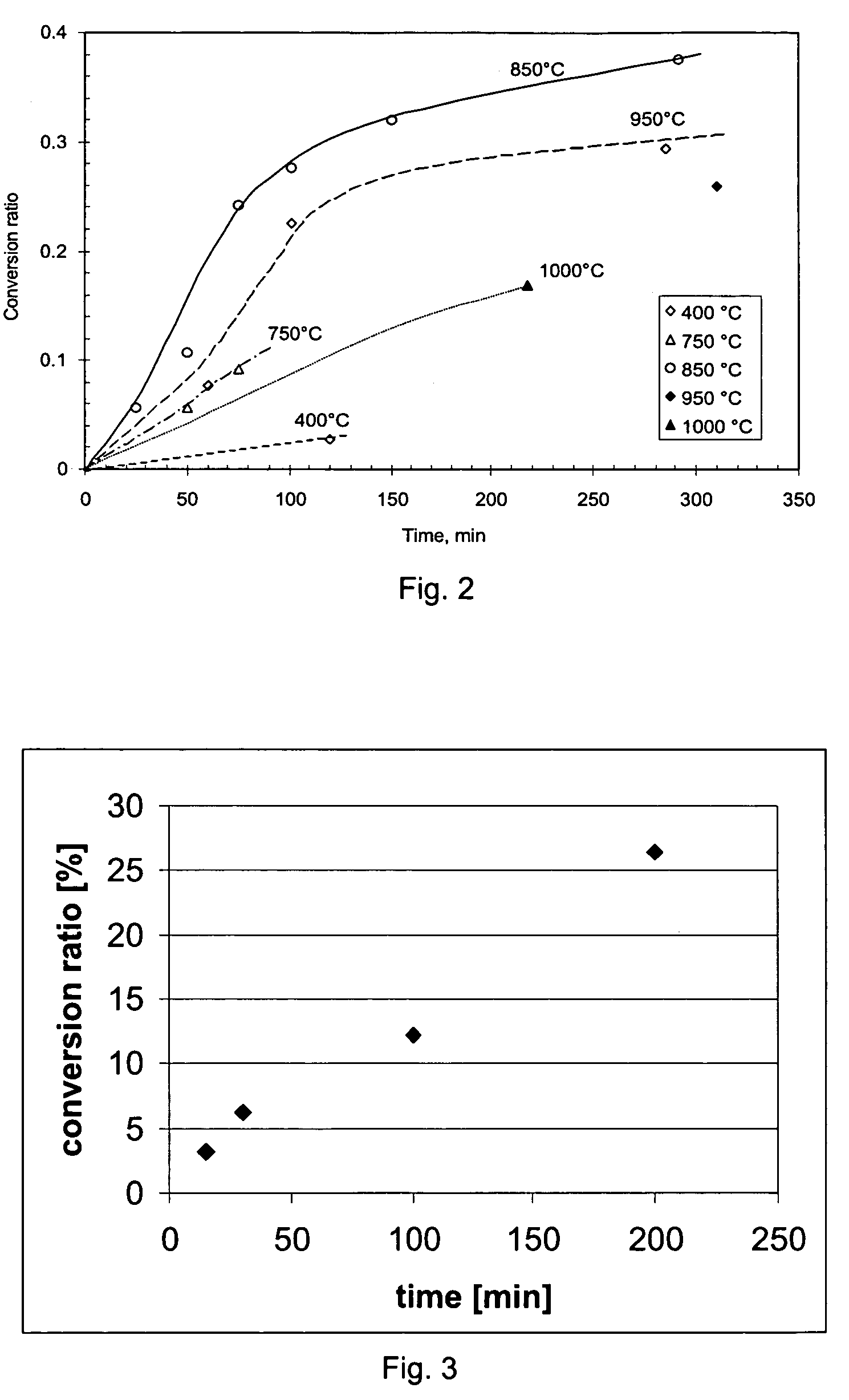Method and apparatus for the production of aluminum
a technology of aluminum sulfide and method, which is applied in the direction of manufacturing tools, separation processes, and polycrystalline material growth, etc., can solve the problems of preventing the dissolution of aluminum sulfide, affecting the separation of aluminum from aluminum sulfide, and the risk of oxygen entering the electrolysis cell,
- Summary
- Abstract
- Description
- Claims
- Application Information
AI Technical Summary
Benefits of technology
Problems solved by technology
Method used
Image
Examples
examples
[0071]FIG. 2 shows the effect of reaction time of the conversion rate for the sulfidation process according to the prior art disclosed in WO-00 / 37691. It is observed that the reaction rate slows down as conversion proceeds. Thus, the known process becomes less efficient for a high conversion ratio, while at the same time, a full conversion is desired for the subsequent separation process.
[0072]FIG. 3 shows the effect of the reaction time on the conversion ratio in a method according to the invention.
[0073]In this experiment gamma alumina was added to a salt mixture containing a eutectic composition of NaCl and KCl, and to which 10 wt. % of cryolite was added. The salt mixture was preheated to 850° C. under argon atmosphere, and at t=0 a mixture of argon and CS2 was supplied through a tube injected into the salt mixture from the top. The experiment was carried out at atmospheric pressure, the CS2 partial pressure being about 0.70 bar. As can be seen, increase of reaction time has a p...
PUM
| Property | Measurement | Unit |
|---|---|---|
| temperature | aaaaa | aaaaa |
| temperature | aaaaa | aaaaa |
| temperature | aaaaa | aaaaa |
Abstract
Description
Claims
Application Information
 Login to View More
Login to View More - R&D
- Intellectual Property
- Life Sciences
- Materials
- Tech Scout
- Unparalleled Data Quality
- Higher Quality Content
- 60% Fewer Hallucinations
Browse by: Latest US Patents, China's latest patents, Technical Efficacy Thesaurus, Application Domain, Technology Topic, Popular Technical Reports.
© 2025 PatSnap. All rights reserved.Legal|Privacy policy|Modern Slavery Act Transparency Statement|Sitemap|About US| Contact US: help@patsnap.com



